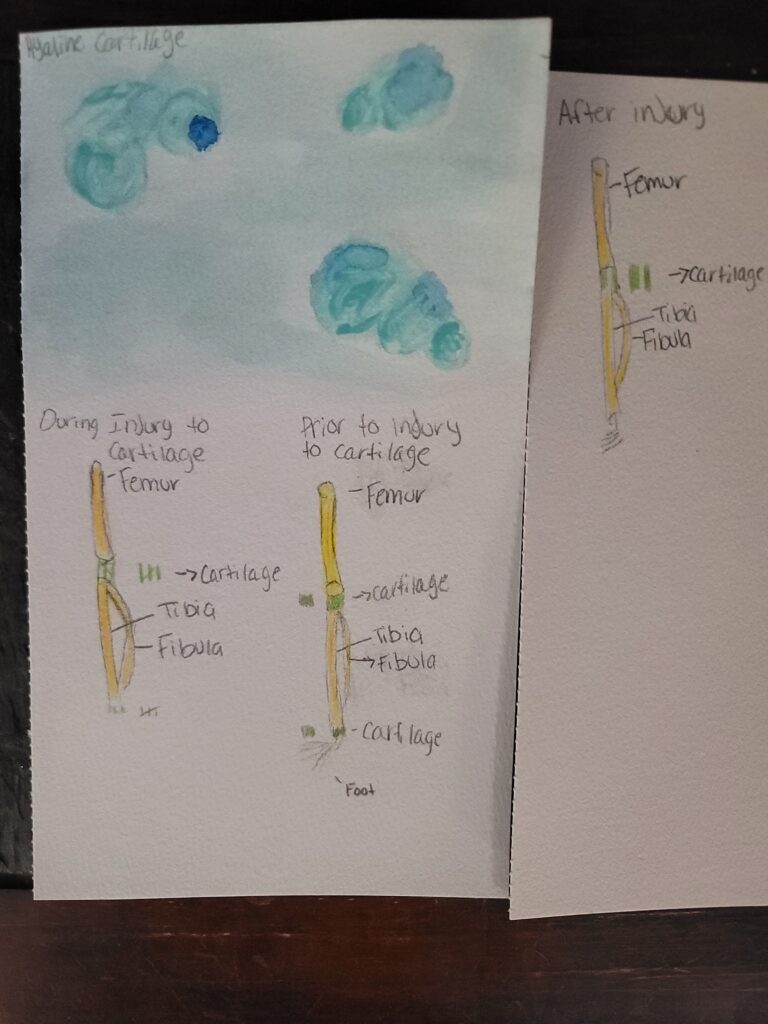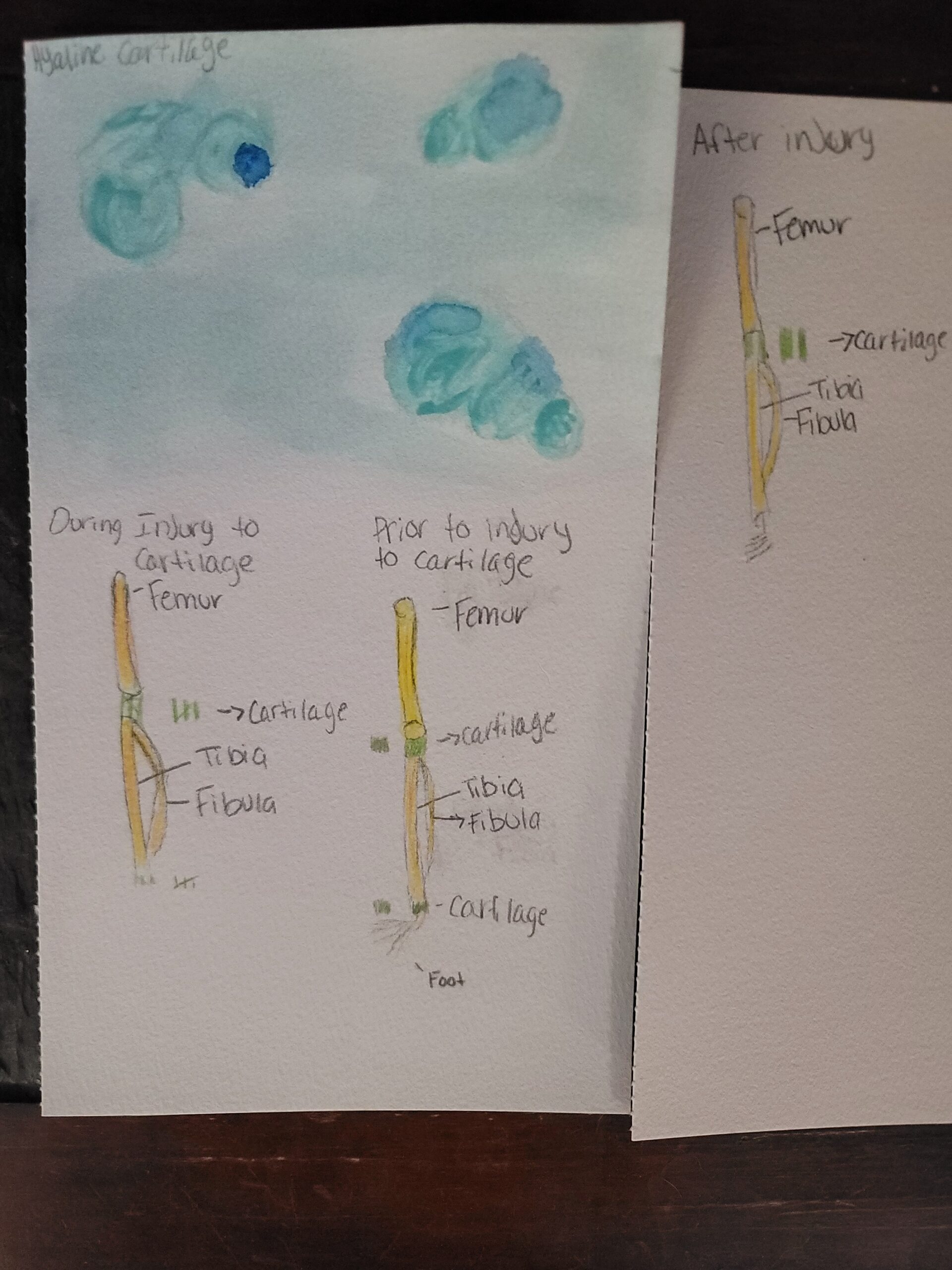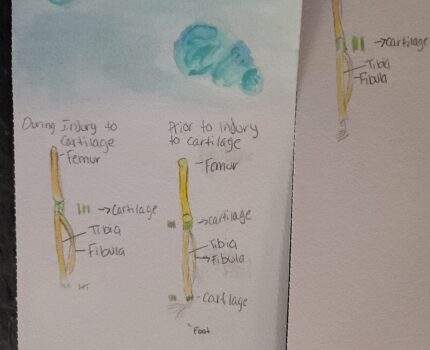Cartilage is an important part of the human body. Cartilage can protect other body parts and it can connect bones to each other. In this case, hyaline cartilage is one of the most important cartilages found in a person’s body. Hyaline cartilage is considered a connective tissue and is found connecting bones, especially infant bones (Larson, n.d., Skeletal Development). Cartilage is also known as tissue is repairable especially when a person receives an injury (Larson n.d., Connective Tissue Dense Regular CTP).
Let’s begin exploring hyaline cartilage and what its job is for humans. This cartilage is meant to withstand different stresses applied to bones and it is considered accommodating (Rodgers, n.d.). When looking at hyaline cartilage it appears to have small circles which are connected to each other. Multiple circles are joined together in a group and are separated from other groups The groups of circles are spaced apart in a large space. The circles include chondrocytes, and the cartilage entails collagen (Betts et al., 2017, 4.3). Betts et al. (2017) explain that hyaline cartilage is produced between bones especially when the bones are still growing.
One question asked is how does cartilage repair itself? Cartilage especially hyaline is able to repair itself (Larson, n.d., Connective Tissue Hyaline Cartilage). According to Brunauer, Cai, Dawson, Falck, Gaddy, Huggins, Hurtado, Li, Lin, Muneoka, Qureshi, Sherman, Suva, Wu, Yan, Yu, and Zimmel (2022) their research proved that cartilage especially hyaline cartilage was able to continue to grow after a severe injury that involved an amputation process. Cartilage may not always be able to grow back in a quick manner, but it is able to repair itself at some point. One-point Brunauer et al. (2022) explains is that scientific aspects that continue to support cartilage repairing itself. Chagin, Imbragimova, Istronav, Istronova, Lychagin, Medvedeva, Nedoruboy, Timashey, and Telpukhov (2021) explain that although hyaline cartilage can repair itself it is likely that the cartilage will need support from other sources.
With the research mentioned earlier and upcoming research presented above, it is noted that hyaline cartilage can repair itself including severe injuries, but it is going to be difficult. The research provided in-depth detail about how the cartilage is projected to heal and it was noticed that hyaline cartilage does need assistance from outside sources. There are several types of tissues, but it appears that hyaline cartilage is a tissue that will struggle with repairs.
References
Betts, J. G., Desaix, P., Johnson, E., Johnson, J. E., Korol, O., Kruse, D., Poe, B., Wise, J., Womble, M. D., & Young, K. A. (2017). Anatomy & Physiology. OpenStax College, Rice University.
Encyclopedia Britannica, inc. (n.d.). Cartilage. Encyclopedia Britannica. Retrieved July 20, 2022, from https://www.britannica.com/science/cartilage#ref213485
Ibragimova, S. I., Medvedeva, E. V., Romanova, I. A., Istranov, L. P., Istranova, E. V., Lychagin, A. V., Nedorubov, A. A., Timashev, P. S., Telpukhov, V. I., & Chagin, A. S. (2021, December 28). Implantation of various cell-free matrixes does not contribute to the restoration of hyaline cartilage within full-thickness focal defects. MDPI. Retrieved July 22, 2022, from https://www.mdpi.com/1422-0067/23/1/292/htm
Larson, D. n.d. Connective Tissue Dense Regular CTP. Human Anatomy and Physiology. University of Alaska- Fairbanks
Larson, D. n.d. Connective Tissue Hyaline Cartilage. Human Anatomy and Physiology. University of Alaska- Fairbanks
Larson, D. n.d. Skeletal Development. Human Anatomy and Physiology. University of Alaska- Fairbanks
Yu, L., Lin, Y.-L., Yan, M., Li, T., Wu, E. Y., Zimmel, K., Qureshi, O., Falck, A., Sherman, K. M., Huggins, S. S., Hurtado, D. O., Suva, L. J., Gaddy, D., Cai, J., Brunauer, R., Dawson, L. A., & Muneoka, K. (2022). Hyaline cartilage differentiation of fibroblasts in regeneration and regenerative medicine. Development (Cambridge, England), 149(2). https://doi.org/10.1242/dev.200249



Abstract
Cartilage’s role in protecting other body parts and connecting bones to one another makes cartilage one of the most important parts of the human body. Hyaline cartilage is a type of connective tissue and plays a role in connecting bones, it is especially vital for infants’ bones as their bones are still growing. The cartilage consists of chondrocytes and are arranged in groups. These groups are spaced apart from each other and are located inside a matrix along with collagen fibers. Hyaline Cartilage has the ability to repair itself in the event of injury and is able to withstand the stress that is applied to the bones. Research has shown that hyaline cartilage is able to slowly repair itself even after a severe injury. The hyaline cartilage requires support from other sources while it is healing otherwise it struggles to repair itself.
Keywords: hyaline cartilage, connective tissue, chondrocytes, repair